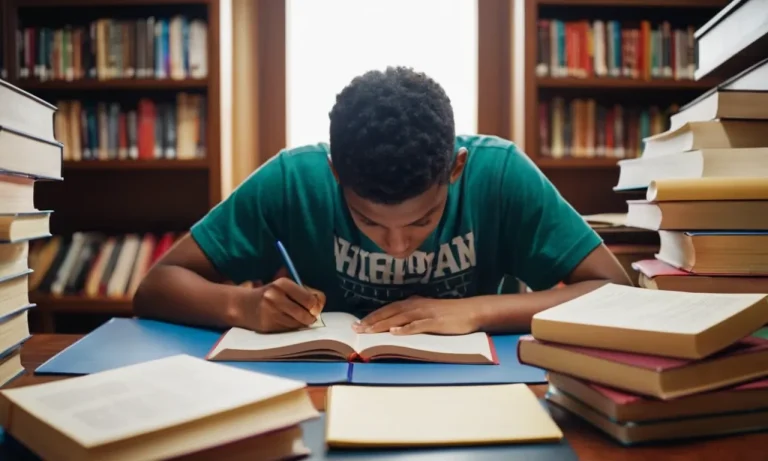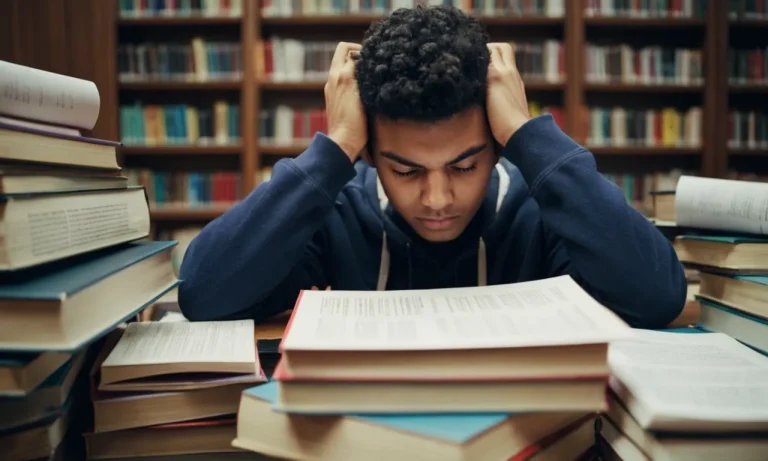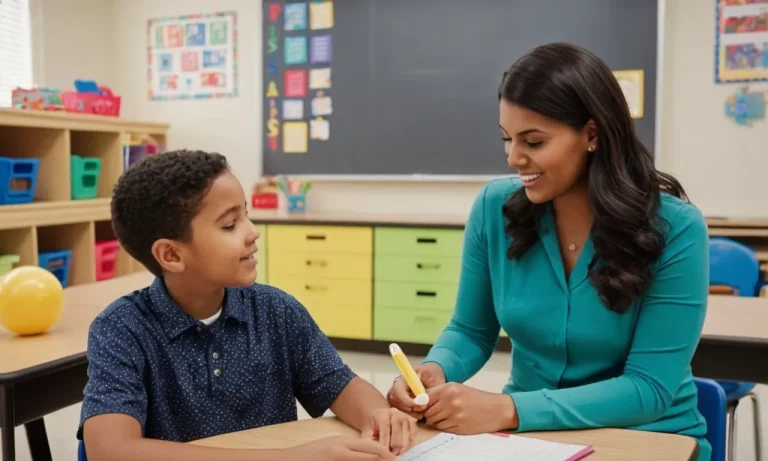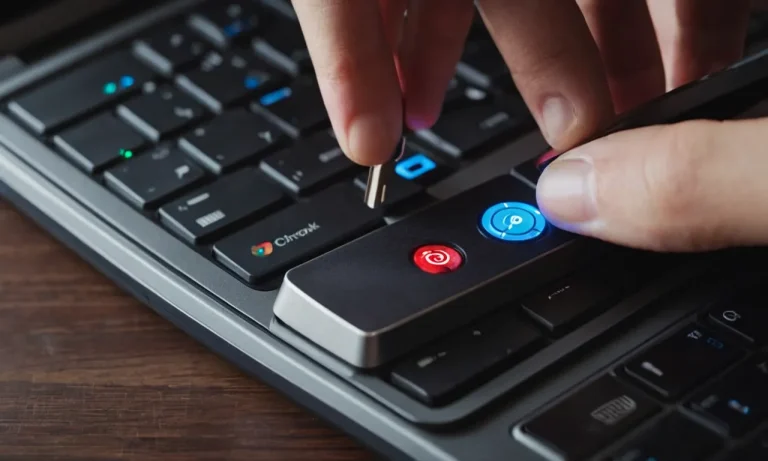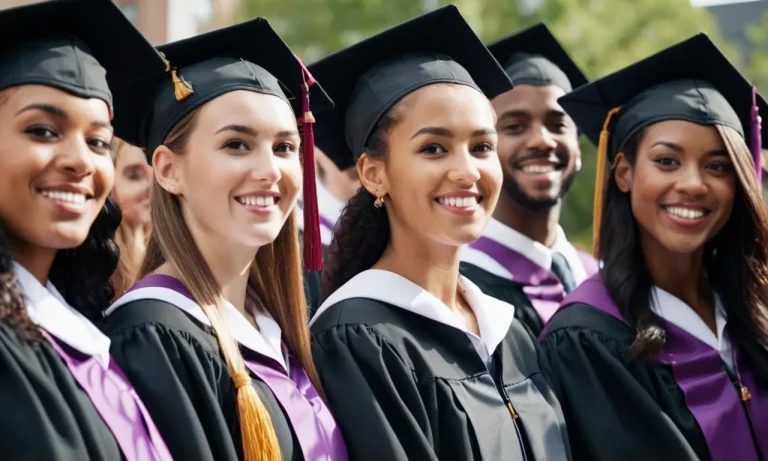Fights at school can have serious consequences that go beyond the immediate physical altercation. Whether it’s a heated argument that escalates or a premeditated act of violence, getting into a fight on school grounds can have long-lasting impacts on your academic and personal life.
If you’re short on time, here’s a quick answer to your question: Getting into a fight at school can result in disciplinary actions such as suspension or expulsion, legal consequences like fines or criminal charges, and potential long-term effects on your academic record and future opportunities.
In this comprehensive article, we’ll explore the various repercussions of getting into a fight at school, including the school’s disciplinary policies, legal implications, and the potential impact on your academic and personal life.
We’ll also provide insights on how to handle conflicts constructively and avoid physical altercations.
School Disciplinary Policies and Consequences
When students engage in physical altercations or fights on school grounds, they face serious consequences outlined in the school’s disciplinary policies. These policies are designed to maintain a safe learning environment and deter violence.
The severity of the disciplinary action typically depends on the nature and circumstances of the incident.
Suspension or Expulsion
One of the most common disciplinary measures for fighting at school is suspension or expulsion. Suspension involves temporarily removing the student from the school for a specified period, ranging from a few days to several weeks or even a semester.
Expulsion, on the other hand, is a more severe consequence, resulting in the permanent removal of the student from the school. According to the U.S. Department of Education’s Civil Rights Data Collection, during the 2017-2018 school year, approximately 3.8 million students received one or more out-of-school suspensions, and 94,600 students were expelled from public schools.
Zero-Tolerance Policies
Many schools have adopted zero-tolerance policies towards violence and fighting. These policies aim to send a strong message that any form of physical aggression or violence will not be tolerated under any circumstances.
Under these policies, students involved in fights may face immediate suspension or expulsion, regardless of the specific details or mitigating factors surrounding the incident. However, critics argue that zero-tolerance policies can be overly harsh and fail to consider the context and individual circumstances, potentially leading to unfair consequences for some students.
Impact on Academic Record
Getting into a fight at school can have long-lasting consequences beyond the immediate disciplinary action. It may leave a mark on the student’s academic record, which could affect their future educational and career prospects.
College admissions officers and potential employers often review disciplinary records as part of their evaluation process. A record of fighting or violence can raise red flags and potentially jeopardize a student’s chances of being accepted or hired. 😔
It’s crucial for students to understand the gravity of getting involved in fights at school and the potential ramifications it can have on their future. Schools should prioritize educating students about conflict resolution, anger management, and the importance of maintaining a safe and respectful learning environment.
👍 By promoting positive behavior and providing support systems, schools can help prevent incidents of violence and ensure that students have the best opportunities to succeed academically and personally.
Legal Implications of Fighting at School
Getting into a physical altercation at school is no laughing matter, as it can carry serious legal consequences. While schools have their own disciplinary policies, the law also has a say in how such incidents are handled. Let’s delve into the potential legal ramifications of fighting at school.
Criminal Charges
Depending on the severity of the fight and the extent of any injuries sustained, criminal charges may be filed against the parties involved. Simple assault, battery, or even aggravated assault charges could be brought forth by the authorities.
According to data from the U.S. Department of Education National Crime Victimization Survey, in 2018, there were approximately 836,000 reported incidents of violence at school among students aged 12-18. These statistics highlight the seriousness of the issue.
Fines and Penalties
If found guilty of a criminal offense related to fighting at school, the consequences can include hefty fines and penalties. These fines can range from a few hundred dollars to several thousand, depending on the state and the severity of the offense.
In some cases, community service or even jail time may be imposed, especially for repeat offenders or incidents involving weapons. It’s crucial to understand that a criminal record, even as a juvenile, can have long-lasting impacts on future educational and employment opportunities.
Juvenile Justice System
For minors involved in fights at school, the juvenile justice system may come into play. This system is designed to rehabilitate and provide guidance to young offenders, with a focus on education and counseling rather than punishment.
However, don’t let the term “juvenile” fool you – the consequences can still be severe. According to the Office of Juvenile Justice and Delinquency Prevention, in 2019, approximately 696,620 cases involving juveniles were processed in the U.S. juvenile court system.
The potential outcomes can range from probation and community service to placement in a juvenile detention facility, depending on the nature of the offense and the individual’s circumstances.
Personal and Social Consequences
Reputation and Relationships
Getting into a fight at school can have a significant impact on your reputation and relationships with others. The aftermath of a physical altercation can tarnish your image and make it difficult for others to trust or respect you.
Even if the fight was not your fault, you may be perceived as someone with a short fuse or a tendency towards violence. This can strain friendships, damage romantic relationships, and make it harder to form new connections.
Moreover, fights can create rifts within social circles, as people may take sides or feel uncomfortable being around those involved. You may find yourself ostracized or excluded from certain groups or activities.
According to a study by StopBullying.gov, students who engage in physical violence are more likely to experience social isolation and have difficulty maintaining healthy relationships.
Emotional and Psychological Impact
Fights at school can take a toll on your emotional and psychological well-being. The experience can be traumatic, leaving you feeling scared, anxious, or angry. Even if you weren’t physically injured, the emotional aftermath can be significant.
You may struggle with feelings of guilt, shame, or regret, which can lead to depression or other mental health issues.
Additionally, the fear of retaliation or future confrontations can cause you to live in a constant state of stress and hypervigilance. This can affect your ability to concentrate in class, participate in extracurricular activities, or even enjoy your daily life.
According to a study by the American Psychological Association, students who experience violence at school are more likely to develop anxiety disorders, post-traumatic stress disorder (PTSD), and other mental health problems.
Future Opportunities
Getting into a fight at school can have long-lasting consequences that may impact your future opportunities. A disciplinary record involving violence or aggression can hinder your chances of getting into your desired college or university.
Many institutions take such incidents seriously and may view them as red flags when considering applicants.
Furthermore, a history of physical altercations can make it more difficult to secure internships, jobs, or other professional opportunities. Employers often conduct background checks and may be hesitant to hire someone with a history of violence or aggression.
According to a survey by CareerBuilder, over 50% of employers said they would not hire someone with a history of violent behavior.
It’s crucial to understand that getting into a fight at school can have far-reaching consequences beyond the immediate disciplinary actions. It can affect your reputation, relationships, emotional well-being, and future prospects.
The wise choice is to always seek peaceful resolutions to conflicts and avoid physical altercations at all costs.
Constructive Conflict Resolution Strategies
When tensions arise at school, it’s important to have effective strategies in place to resolve conflicts constructively. By promoting open communication, seeking mediation, and fostering a positive school culture, we can address disputes in a healthy and productive manner.
Effective Communication
Clear and respectful communication is key to resolving conflicts. Encourage students to express their feelings and perspectives openly while actively listening to one another. According to Edutopia, “When students learn how to communicate their needs and listen to others, they’re more likely to find mutually acceptable solutions.”
👂 Role-playing exercises and conflict resolution workshops can help students develop these essential communication skills.
Seeking Mediation or Counseling
Sometimes, conflicts require the intervention of a neutral third party. School counselors, mediators, or trained peer mediators can facilitate discussions and help students find common ground. According to a study by the RAND Corporation, peer mediation programs have been shown to reduce disciplinary incidents by up to 65%.
🙌 By providing a safe space for open dialogue, mediation can help students resolve disputes in a constructive and non-violent manner.
Promoting a Positive School Culture
Ultimately, fostering a positive and inclusive school culture is crucial for preventing conflicts from escalating. This involves:
- Implementing anti-bullying policies and programs
- Promoting diversity, equity, and inclusion
- Encouraging extracurricular activities and team-building exercises
- Providing mental health support and resources
According to the National Center for Education Statistics, schools with a positive climate have lower rates of violence and higher academic achievement. 📚 By creating an environment of respect, empathy, and understanding, we can cultivate a culture where conflicts are less likely to occur in the first place.
Remember, resolving conflicts at school is a collaborative effort. By embracing effective communication strategies, seeking mediation when needed, and promoting a positive school culture, we can equip students with the tools to navigate disputes in a constructive and meaningful way.
💪 Isn’t it awesome to see students learning to resolve conflicts peacefully and grow into responsible, empathetic individuals? 😊
Conclusion
Getting into a fight at school can have severe and far-reaching consequences that can impact your academic journey, legal standing, and personal life. From disciplinary actions like suspension or expulsion to potential criminal charges and long-term effects on your record and future opportunities, the risks are significant.
However, by understanding the gravity of the situation and actively seeking constructive conflict resolution strategies, you can avoid physical altercations and promote a positive school environment. Effective communication, seeking mediation or counseling, and fostering a culture of respect and understanding can go a long way in preventing fights and ensuring a safe and productive learning environment for all.

